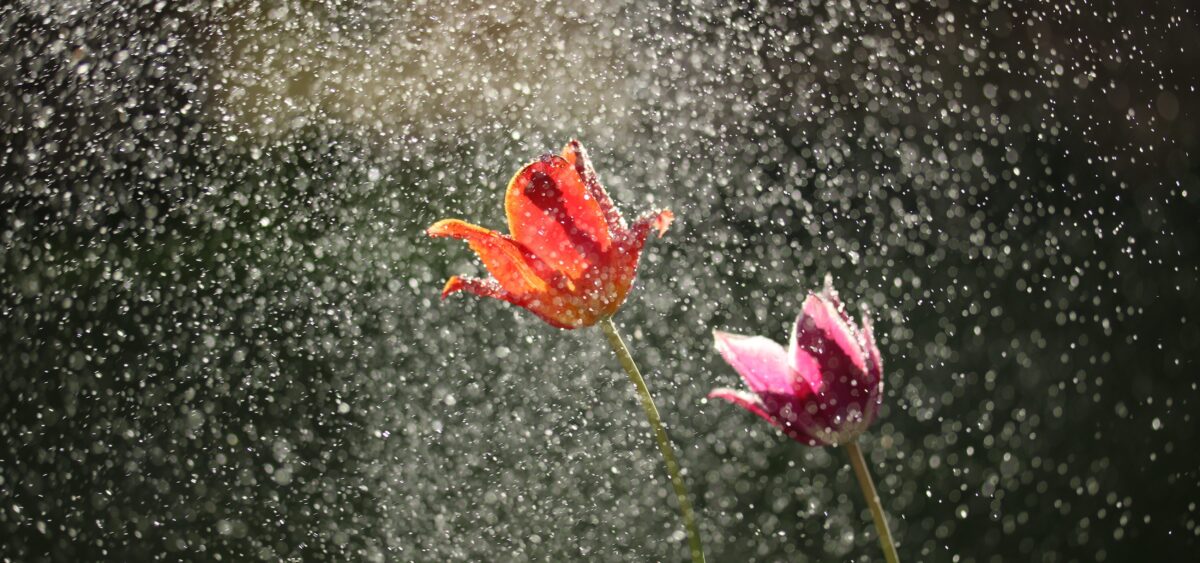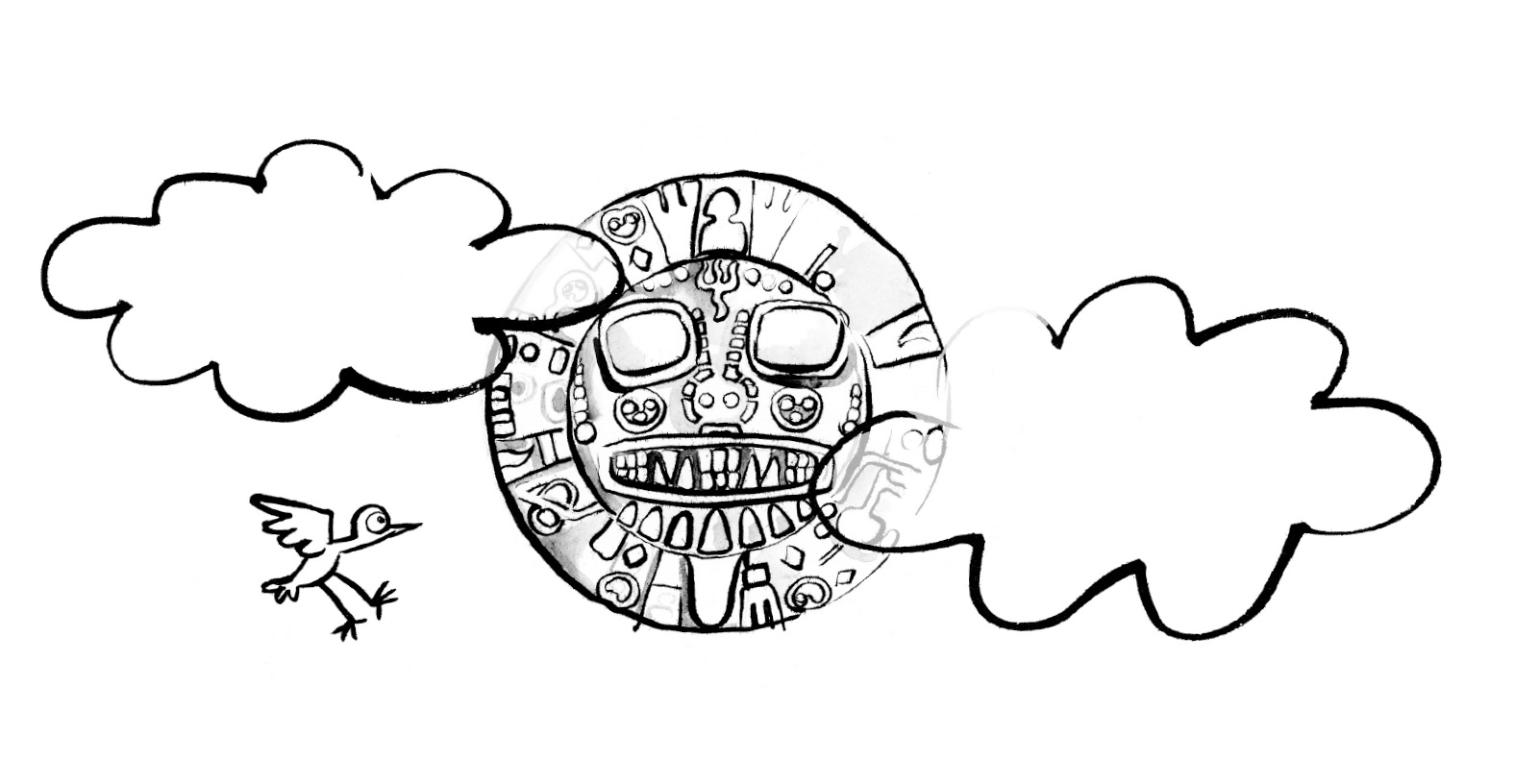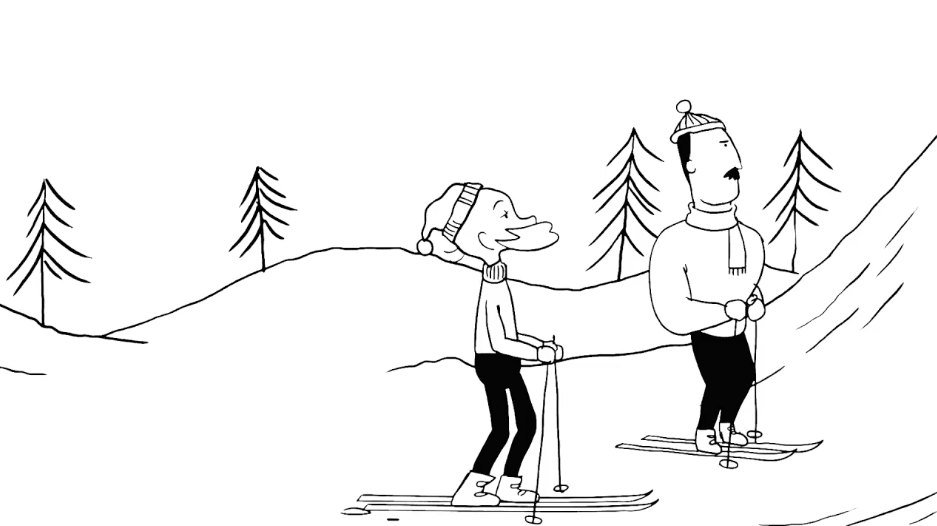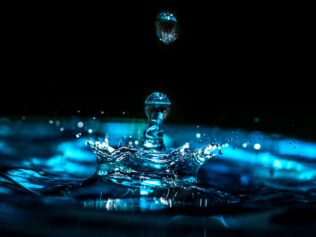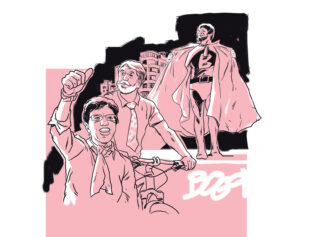
We often like to forget that access to clean water still isn’t a universal right, but a rather rare privilege – a luxury that can be taken away from us at any point and one that most of the world’s population can only dream of.
To reach a source of drinking water in South Sudan, one has to walk five, 10 or sometimes even 20 kilometres. Women and children set off to get water in the morning. They walk slowly, in a cheerful group. Once they get there, there is time to eat and gossip. No one is stressed, no one is in a rush. Families return with 20-litre canisters on their heads in the late afternoon. Then all the washing, cooking and washing-up begins.
The situation is slightly different in the capital, Juba. Only a select few can dream of sewage or running tap water. Juba’s water treatment plant is the beating heart of the town. Water can be bought from large water tankers marked ‘H2O’ (often altered to read ‘HO2’ or ‘2HO’), typically operated by Eritrean businesses. Bottled water is available in shops, but most Sudanese people cannot afford to buy it. The poorest drink water from the Nile. “This causes gastric issues and illnesses such as typhoid fever, which many of my friends have suffered from – even those who were vaccinated,” says Piotr Horzela, an engineer and entrepreneur who lived and worked in Juba for over two years. Horzela avoided such illness, but he still contracted a parasitic amoeba and was in treatment for over a year. There are many more diseases caused by contaminated water in African countries. They cause stomach pain, diarrhoea, weakness and weight loss, and sometimes lead to death.
All this is confirmed by reports published by international organizations. In the 2019 report “Water Under Fire”, UNICEF experts reported that in areas affected by war, more children die from diarrhoea and diseases caused by poor water conditions than from bullets or bomb explosions. In fact, children under the age of five are up to 20 times more likely to die from such diseases. Hence the idea to help local communities by selecting and educating people known as hygiene leaders, who can then disseminate knowledge on this issue. The courses teach the basics of hygiene and that water taps and toilets cannot be located too close to one another.
In South Sudan, water is at a premium and shortages often lead to conflict. The Sudanese are a largely rural society, and the two largest ethnic groups – the Nuer and the Dinka – need water and pastures for their cattle. While this is not an issue during the wet season, in the dry season, when the areas suitable to pasture shrink rapidly, a real struggle begins. Shepherds move closer and closer to the Nile and its backwaters, but there is still not enough, often leading to bloody conflicts.
Fresh water, salt water
Inhabitants of Indonesia also experience water scarcity. Despite being surrounded by the ocean across the numerous islands in the province of Southeast Sulawesi, the world’s largest remaining sea nomad group – the Bajo – have to sail for hours to access drinkable water. “It is sold at a special point, something like a petrol station located on a pier, except instead of a queue of cars there is always a string of boats filled with 10- and 20-litre canisters,” says traveller and environmentalist Anna Jaklewicz, who spent nearly two years in Indonesia.
In such areas, water is a rationed commodity. 10 canisters – that’s how many can fit on an average boat – cost 10,000 Indonesian rupiahs. Those who cannot afford it must sail away. At the shore there is a well, but because of its location the water is not very tasty – it has a strong, salty aftertaste. 10 canisters – for drinking, cooking and limited bathing – will last an average Bajo family two days. The Bajo use buckets and a hole in the ship’s floor – all waste is poured straight into the Banda Sea.
Other countries in the region experience similar difficulties. According to UNICEF, fresh water remains a luxury in many places on Earth, a fact that is often underestimated in Europe and North America. 2.2 billion people do not have access to fresh water in their place of residence. About 4.4 billion homes lack adequate sanitation. Globally, as much as 40% of the land comprises areas with very difficult access to water. The situation is particularly bad in sub-Saharan Africa (where just 25% of the population have easy access to water), Latin America and South Asia. Children suffer the most. Easily-accessible water can be enjoyed by only 69% of pupils across the world. In 2016, only 66% of schools had basic sanitary facilities, while as many as a third of schools in sub-Saharan Africa and Oceania are deprived of this privilege.
In Europe, the situation is much better, but still not ideal. EU standards say that tap water should be drinkable without the need of filtering in all EU countries. Still, as many as 100 million people (i.e. almost every seventh European) do not have direct access to such water – this applies to the entire continent, not just the EU.
160 million condemned
“Safe water, sanitation, and hygiene at home should not be a privilege of only those who are rich or live in urban centres,” reiterated Dr Tedros Adhanom Ghebreyesus, director-general of the World Health Organization (WHO). Despite efforts to improve access to water, there is still a long way to go.
According to WHO analyses, poor sanitation and contaminated water contribute to the large spread of diseases and the death of more than 360,000 young children (i.e. younger than five) each year. As many as 160 million people in the world are doomed to drink contaminated water from surface springs (either streams or lakes) – for example, those connected with the Nile in South Sudan. In many countries, there is a lack of reliable information on the dangers of lack of hygiene and access to clean water.
My experience in India mirrored that of sub-Saharan Africa or Indonesia. A shower consisting of a tin barrel and a plastic cup is still standard in many states. Often the water used is not clean, as is the case with drinking water. Because of the lack of easy access to water, food in some of the more modest restaurants are prepared by chefs that don’t wash their hands. As a result, despite great caution, I was frequently ill – after having tea in Uttar Pradesh (perhaps the water came from a polluted section of the Ganges), diluted juice in Rajasthan, and a one-pot dish in Karnataka. Upon returning to Poland, I received months-long treatment for parasitic diseases contracted in India.
There are some plans to fix this. Indian prime minister Narendra Modi has promised that by 2024 every household in the country will have running water. This is linked to a plan to decontaminate rivers and provide better management of rainwater. This is an extremely ambitious plan – at the moment, as many as 80% of households in rural India do not have a tap. Meanwhile, the demand for water is constantly growing. The National Institute of Transformation of India (NITI) estimates that demand in this huge country of 1.3 billion citizens will double as early as 2030. This will have a direct impact on India’s economy. It is predicted that for this reason alone, GDP will fall by up to 6%. As early as 2025, India’s water resources will shrink to around 1300 cubic metres, which is below the demand for water (1700 cubic metres), meaning there will be a shortage of water in the soil.
Wells and hierarchies
Aid to developing countries must be properly planned, otherwise, it can lead to problems. In South Sudan, Horzela worked with international organizations that designed and built rural wells. Often, owing to unfamiliarity with local realities, they sank large amounts of money into unsuccessful investments.
Westerners that go to developing countries typically assume that whatever works in their home countries is bound to also work there. This is a big mistake – and was especially common a few decades ago, when aid organizations first began their operations. For example, wells were built in the middle of villages to make people’s life easier, and so that women wouldn’t have to spend entire days walking to and from the springs. Later, it turned out that these objects were demolished. Why? Because they disturbed the eternal harmony. Women no longer had to go to the springs, so they did not take the children with them. Local men didn’t like the fact that in their free time – spent talking to other men and drinking coffee in peace – they had to endure the noise of their progeny. This caused tension. Another example: if an aid organization chose a member of the community to take part in the construction of the well, that person was later given the tools to repair it. This caused conflict, because that choice – even if it was the right choice – wasn’t made by the village authorities. This disrupted the local hierarchy.
In some cases, the solution was to build a well a kilometre or two outside the village. Women could still go there in groups, thus organizing their social life, and men were left in peace for periods of time.
Save water!
Not only India or Sudan, but also many other countries in the world are struggling or will soon be struggling with a shortage of drinking water. Water levels in underground reservoirs and rivers are constantly decreasing. Water is no longer a renewable resource, which means that humanity no longer has the opportunity to bring it back to its former levels. The reasons for this are widely known: global warming, urbanization, developing industry and agriculture, population growth. It is estimated that by 2050, demand for drinking water will increase by 55%! That is why it is crucial to save water.
The actions of environmental activists (and some governments aware of the gravity of the situation), seem to be the light at the end of the tunnel – both at a national and local level. More than two decades ago, Antanas Mockus, the notorious mayor of Bogotá, encouraged citizens to save water in ways that may have been quite unconventional, but were effective. Local television showed the mayor taking a shower, covering his privates with just half a calabash tree shell. Reaching for the soap, Mockus would turn off the tap, only turning it back on when he was ready to rinse off. In a few months, water consumption in the capital of Colombia decreased by 40%.
In a similar vein, Venezuelan president Hugo Chávez (who died in 2013) urged his compatriots to stop singing in the shower: “Some people sing in the shower, in the shower half an hour. No kids, three minutes is more than enough. I’ve counted, three minutes, and I don’t stink,” he said during a televised cabinet meeting. This provoked ridicule from the opposition, but even if Chávez’s economic and political decisions were controversial, in this case he was right.
Further controversy was caused by a social campaign in Brazil. In the face of the water crisis, the authorities called for… urinating in the shower, to save the water used when flushing the toilet. According to local analysts, this would save as much as 4380 litres per person per year.
It is worth remembering that fresh water constitutes just 2.5% of the Earth’s total water resources. Of this figure, only 0.0132% are rivers and lakes, and 1.7% are glaciers. This is why the average temperature rises in many places around the globe are so dangerous – rapidly melting glaciers equal rapidly decreasing drinking water resources. Global warming is a separate, huge element of the debates about saving the planet. But it is good to be aware that a variety of other factors impact the dwindling supply of the life-giving fluid.
A tool that allows us to measure how much water is needed to produce a certain good is the so-called water footprint. This is the sum of the direct and indirect consumption of water by the consumer. The more complicated the production process, the greater the water footprint. A good example is the cost of producing one kilogram of beef. It takes as much as 14,500 litres of water! For comparison: a kilogram of rice uses 2500 litres, wheat uses 1000 litres, bananas use 790 litres, tomatoes use 214 litres, and apples use 125 litres. In this sense, it is really worth considering switching to a vegan or vegetarian diet.
Experts recommend changing our eating and consumption habits. We should shop sensibly, choosing articles with the lowest possible water footprint. We should stop wasting food and go zero waste. Likewise, we should try to use rainwater as much as we can. Where possible, we should drink tap water and give up bottled water – in this way, we will save money and let the planet breathe.
Freshwater mussels and barbels
“Don’t drink tap water! It’s full of chemicals, and it’s hard, it will give you kidney stones!” I’d hear from my mother, growing up in Poland in the 1980s and 1990s. So I reached for bottled water, juices, or boiled and cooled water: it had no taste and was difficult to swallow, but I had no choice… My mother was probably right, but fortunately a lot has changed since then. “Back then, tap water sometimes really resembled [the colour of] tea. This is because water treatment systems were much worse than today and plumbing was bad. Iron and other elements from metal pipes were deposited in the water,” says Bogna Wlekły, an expert on water and food quality.
A breakthrough came at the end of the 1990s, when Poland strived to access the European Union. Funds from European institutions helped Poland improve the entire system. Many water treatment plants were modernized and new technologies were introduced. As a result, in a very short time, the quality of water improved to equal that in other EU countries.
At the moment, tap water in Poland is carefully controlled by waterworks, external laboratories and the sanitary authority, Sanepid. Interestingly, Unio tumidus (the swollen river mussel) and certain fish (such as the barbel, vimba bream and common rudd) are used as testers in the biomonitoring of the Vistula River and Lake Zegrzyńskie. They cannot be fooled – if the water is dirty or contaminated, the mussels close their shells and try to isolate themselves from the environment. This immediately triggers an alarm in water supply plants and the employees are obliged to perform urgent laboratory tests. The same applies to fish – in this case, any unusual behaviour is monitored using CCTV cameras.
Thanks to this, Polish tap water is not worse than bottled water, and sometimes it is even superior. “Bottled water is sold by commercial companies that are primarily interested in profit. They decide how often the product is controlled, also by Sanepid. Anyway, I definitely trust tap water more. I drink it myself and give it to my children every day,” adds Bogna Wlekły. This does not change the fact that many Poles are still greatly suspicious of tap water, undoubtedly thanks to memories from decades ago.
In Poland, more than 105 litres of bottled water are drunk on average per person each year, while in Sweden this figure is just 25 litres. “Here, most people believe that tap water has better quality than bottled water. And if you drink shop-bought water, it is usually fruit flavoured water, e.g. pear or strawberry. Perhaps that’s because Swedish tap water seems to taste better than tap water in Poland, if we can talk about the taste of water at all,” says Katarzyna Tubylewicz, a Polish writer living in Stockholm.
In Scandinavia, the sight of managers or schoolchildren with their own water bottles is quite common. The Swedes drink tap water in large quantities, they do not need special encouragement. In public buildings, plastic cups have disappeared as people carry their own water bottles with them. “I cannot call this a trend, because it has been like this for years,” adds Tubylewicz.
Anti-watering fashion
Drinking tap water is part of the Swedish lifestyle, which includes communing with nature and doing sports. The Swedes enjoy clean air and good, ecological food. So they believe that their water must also be healthy. You don’t have to talk anyone into it. However, there is a common belief that water should be conserved – for example, using a dishwasher instead of washing up by hand (in Poland, we still tend to think that the dishwasher uses a lot of water), or taking a shower instead of a bath.
It follows that tap water is always available in restaurants for free. What’s more, in many places, carafes of water – sometimes with slices of orange or lemon – stand on the tables. In my experience, in Poland, asking for a glass of tap water is still often met with surprise or even reluctance from waiting staff or restaurant owners.
Swedes still have no problems with water shortages, but they are aware of future dangers. During recent, hot years – when water reserves shrunk significantly – government organizations began to call for saving water by not watering lawns. Because the Swedes trust their leaders to a much greater extent than, for example, the Poles, gardens and front lawns full of yellow, parched grass began to appear. The previously commonly-used sprinklers almost disappeared and not watering one’s lawn has become a trend, something to be proud of. “I think that some programmes are easier to implement in Sweden, where we have a civil society that simply trusts their government institutions. But that’s something the Swedes have been working on for years,” explains Tubylewicz.
The problem is that time is running out – especially in Poland. Our water resources are among the poorest in Europe. In the years 1946–2016, the annual average per capita was just 1800 cubic metres, while in Europe it was as much as 5000 cubic metres. Unfortunately, it’s even worse now. Still, Poles consume as much as 400 litres of water per person per day, while people in African countries consume on average 15 litres per year. This includes not only the water that we drink or wash with, but also the water that is used to produce food and everyday objects. That is why it is so important to become conscious consumers. Unfortunately, it is quite possible that a simple request for a glass of water will soon take on a whole new meaning.


